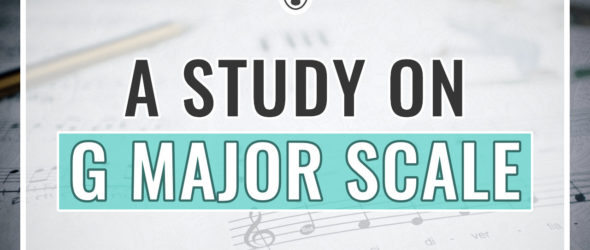The violin G Major scale is great for a beginner to learn. Starting on the low G string, the one-octave scale only requires you to play in the most common hand position on the lower two strings.
The two-octave violin scale allows you to play on all four strings, and the three-octave scale is a great way to learn how to navigate your fingerboard. Read on to learn all about the G Major scale, and to discover famous pieces of music written in this key!
Here you can download a free booklet with scales, arpeggios, and exercises included in this post:
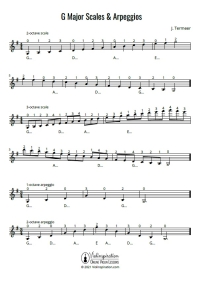
G Major Scales, Arpeggios
and Bonus Exercises
What Are the Notes for the G Major Scale on the Violin?

The notes of the G Major scale are G, A, B, C, D, E, and F♯. The notes follow the Major scale pattern of whole and half steps: whole, whole, half, whole, whole, whole, half. In this scale played in the first position, a high second finger is used on G and D strings and a low second finger on A and E strings.
How Do You Play the G Major Scale on the Violin?
The one-octave G Major scale on the violin begins on the open G string. Then, play the A note with your first finger, B with a high second finger, and C with the third finger. Switch to the D string and play the same pattern. Next, play all the notes in reverse order.
Here you can watch my video about how to play the G Major scale on the violin:
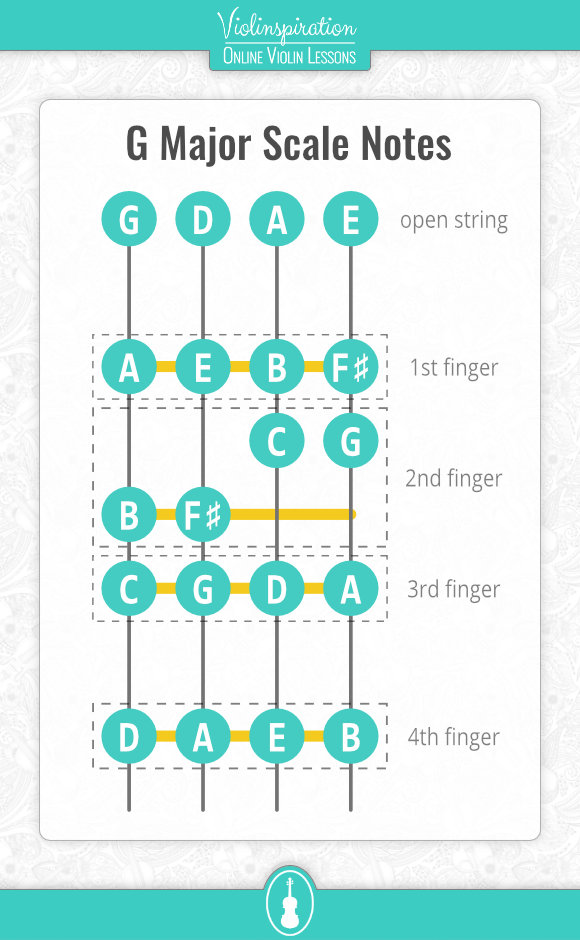
| 1st note | Tonic | G |
| 2nd note | Supertonic | A |
| 3rd note | Mediant | B |
| 4th note | Subdominant | C |
| 5th note | Dominant | D |
| 6th note | Submediant | E |
| 7th note | Leading Tone | F♯ |
| 8th note | Tonic | G |
How do you play a G Major Arpeggio on the Violin?
The notes in the G Major arpeggio are G, B, and D. To play the G Major 1-octave arpeggio, use open G string, high second finger on the G string, open D string, and the third finger on the D string. After that, play the notes in descending order.
To play one-, two-, and three-octave G Major arpeggios, use the following fingerings:
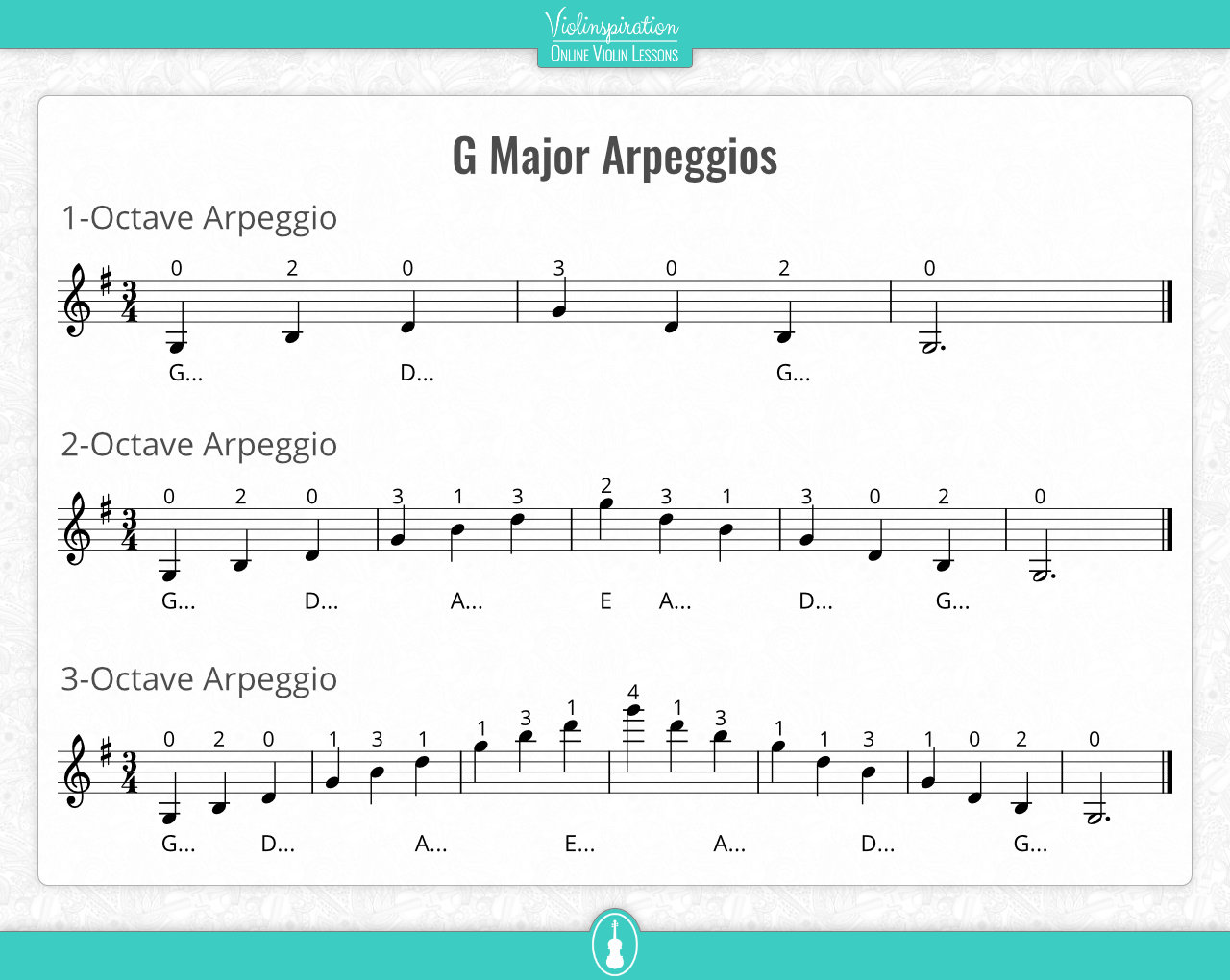
How do you play a Two-Octave G Major Scale?
The two-octave scale can be played all in the first position, starting on the open G string, and ending on the low second finger playing G on the E string. Also, the second finger needs to be placed low on the A string.
Here are the notes of a two-octave G Major scale:
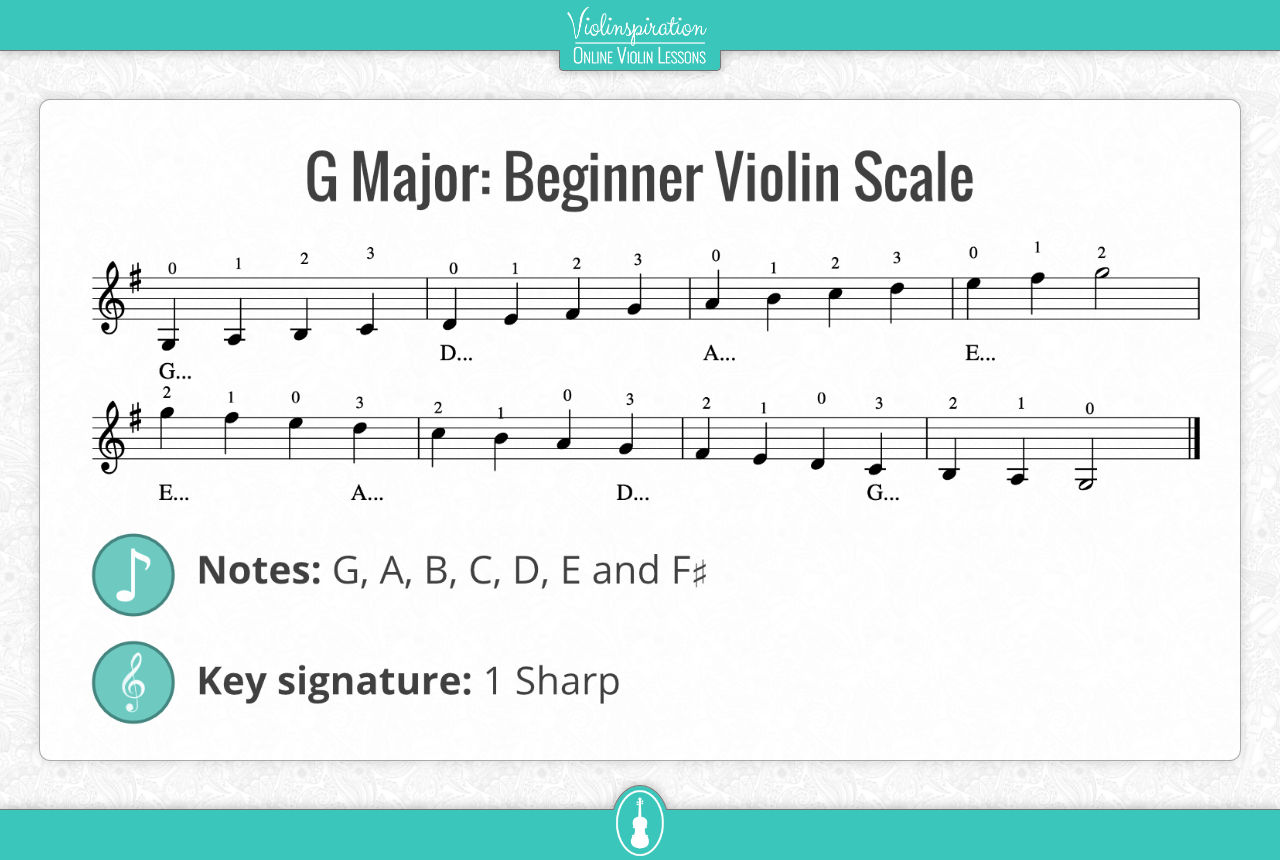
Three-Octave G Major Scale on the Violin
The three-octave G Major scale begins on the open G string and ends high on the E string. When you feel that you’re ready for it, follow the fingering as shown in the image below:

How to Practice the G Major Scale
The G Major scale is great to learn as a beginner because the one- and two-octave scales are all in the first position. For a challenge, you can learn the three-octave scale, which requires three shifts in both directions.
Here’s a fun way to make scales even more interesting: find a bowing that shows up in a piece you’re currently learning, and apply it to the scale!
Another way to practice is to play more than one note per bow stroke. When you’re familiar with playing each note on one bow stroke at approx. 60 bpm, you can try to play 2 (like in the example below), 3, 4, 6, and even more notes in one slur and gradually increase the speed.
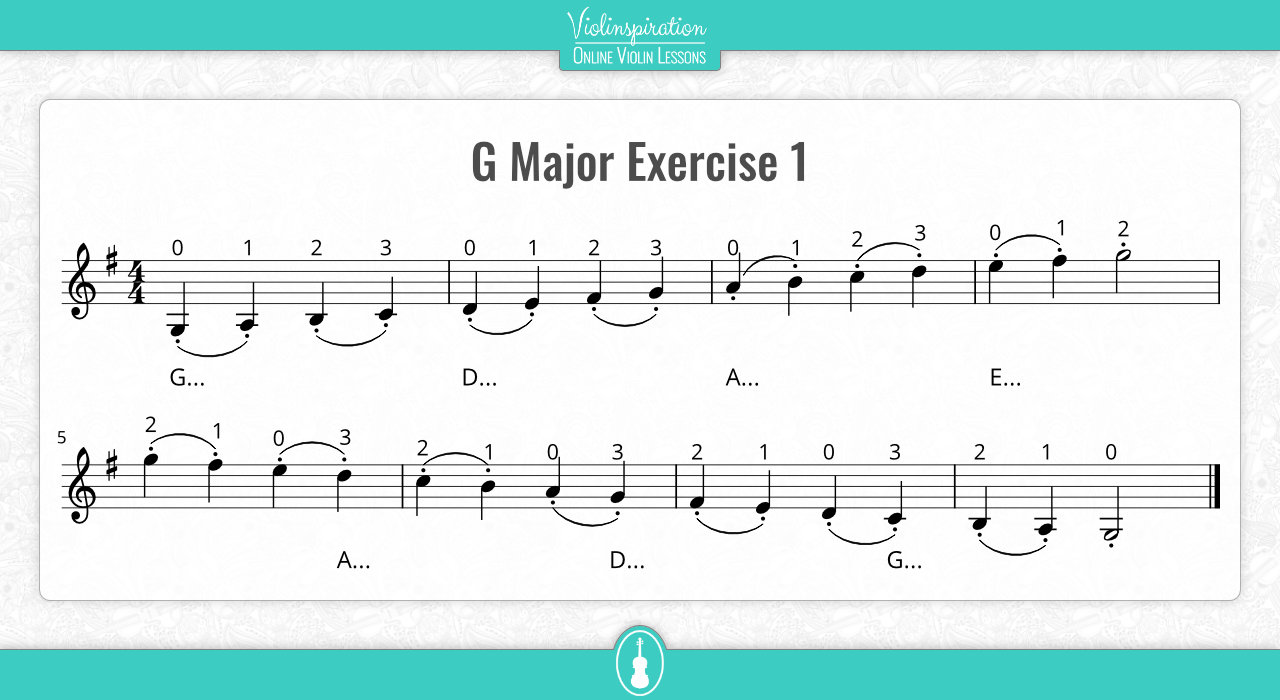
Practicing scales gives you a good occasion to work on different rhythms. Let’s have a look at the following exercise. For each note of the scale, play one long note (a dotted quarter note) and one short note (an eighth note) – both on one bow stroke. Is it easy? Then try to play the short note first and then the long one! You can also apply a difficult rhythm from the piece you’re currently learning.

If you’re a member of Julia’s Violin Academy, you will find more exercises in the G Major and other scales in the Beginner course. To become a member of the Academy, click here and request your invite.
Five Well-known Pieces in G Major
Bach – Minuet in G
Did you know that this well-known piece of harpsichord music was not actually written by J.S. Bach?
It appeared in Notebook for Anna Magdalena Bach, a book of manuscripts given from Bach to his second wife. The first few compositions in the book were written by Bach himself, but the Minuet in G was actually a transcription of a harpsichord piece by Christian Petzold.
Bach – Cello Suite No. 1
J.S. Bach’s first cello suite is the most famous of the six. The prelude is used in movies, commercials, and tv shows. Even though the cello suites are very popular now, that wasn’t always the case. They were made famous by cellist Pablo Casals in the 20th century when he found an old copy of the suites in a music store.
All of Bach’s six cello suites (each written in a different key) follow a formula: each suite begins with a prelude, then the other movements are various Baroque dances. These suites are regularly played on the viola and sometimes on the double bass, in addition to the cello.
The prelude to the first cello suite is made up of many arpeggios, including G Major, which build and build to a large, passionate ending.
Haydn – Symphony No. 94 in G Major, “Surprise Symphony”
Haydn’s 94th Symphony is nicknamed “Surprise” Symphony for a giant forte chord in the middle of the second movement that’s otherwise quiet and lyrical. A writer of 107 symphonies, Haydn’s Surprise Symphony was the second of a set of 12 “London” symphonies, which he wrote in the city towards the end of his life.
The story goes that Haydn was tired of audiences falling asleep during his symphonies, and added a giant chord to wake everyone up. Newer research shows that Haydn was likely just trying to impress the audience with an unsuspecting element.
The nickname “Surprise” was given by a flutist in the orchestra that premiered the symphony. The second movement is the most well-known, but even to the trained ear, the “surprise” can be quite jarring. Give it a listen, and try not to be startled by the surprise!
Mozart – Eine Kleine Nachtmusik (Serenade No. 13 for Strings in G Major), K. 525
Mozart’s Eine Kleine Nachtmusik is very well-known through its use in movies, tv, and as inspiration for newer pieces of music. The title Eine Kleine Nachtmusik means “a little serenade” in German, but is most known as the literal translation “a little night music.”
Mozart wrote the serenade at the same time as his opera Don Giovanni, but it was not published until after his death. Eine Kleine Nachtmusik is made up of four movements: Allegro, Romanze, Menuetto, and Rondo. Click here to download the sheet music of part 1 and get my best tips on playing it!
Mozart – Violin Concerto No. 3 in G Major, K. 262
Mozart wrote all five of his violin concertos in 1775 when he was 19. The third just so happens to be in G Major! The concerto as a whole has a light sound, and only a small orchestra is needed in order to play it.
The melody of the first movement was taken from an opera he wrote not too long before the concerto, called Il ré pastore. The second movement is expressive with only light orchestral accompaniment and finishes with a violin cadenza. The third and final movement is a folk-like dance and finishes with the winds.
Final Note
Scales and arpeggios will help you feel more comfortable finding notes on your violin, and you’ll soon be able to navigate the fingerboard better. Playing scales of all keys will help level up your violin playing!
G Major is a great scale to learn since the two-octave version is played over all four strings. It’s a perfect way to practice string crossings, and will prepare you to play lots of popular pieces in the key!
Here you can download a booklet with G major scales, arpeggios, and exercises from this post:

G Major Scales, Arpeggios
and Bonus Exercises
Here you can download a booklet with the most commonly used violin scales for your level:
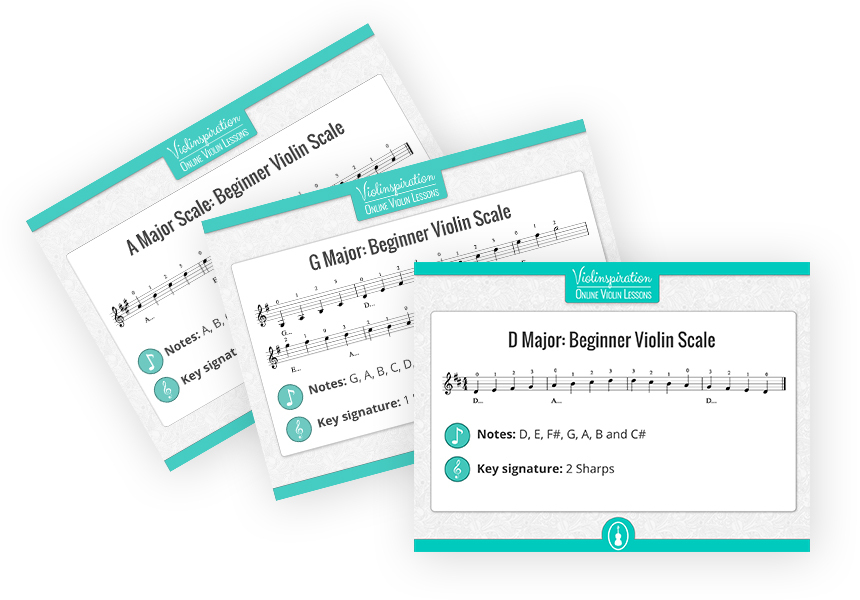
5 Most Common Violin Scales
for Beginners
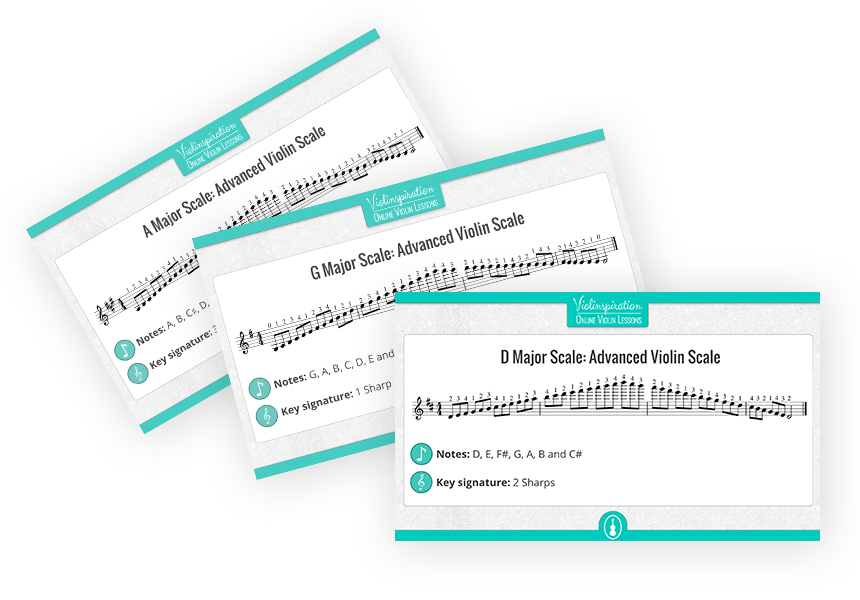
5 Most Common Violin Scales
for Advanced Player
